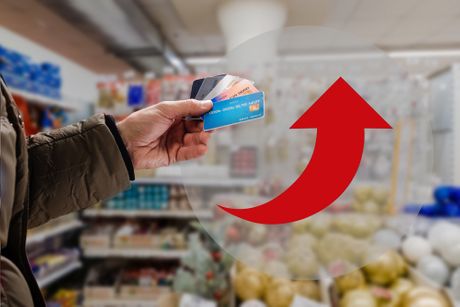Serbian central bank (NBS) once again raises key policy rate

At its meeting held on Thursday, the NBS Executive Board voted to raise the key policy rate by 25 basis points (bp), to 5.75%. The deposit facility rate was kept at 4.50%, while the lending facility rate was raised to 7.0%.
In its decision-making, the Board was guided by the persistently high global cost-push pressures and imported inflation, despite the signs of easing, as well as the necessity to contain their second-round effects on price growth at home through inflation expectations and to impact a part of demand-side pressures.
What does the central bank's explanation say
The NBS thus helps inflation to strike a downward path and retreat within the target tolerance band until the end of the projection horizon.
The transmission of the rate increases so far to the rates in the markets of money, loans and savings signals the effectiveness of the monetary policy transmission mechanism via the interest rate channel. Moreover, by maintaining the relative stability of the dinar against the euro, the NBS also significantly contributes to containing the spillover effect of rising import prices on domestic prices, and to overall macroeconomic stability amid elevated global uncertainty.
As stated by the Board, global cost-push pressures have weakened, mostly reflecting falling global energy prices, resolution of supply bottlenecks and reduced container shipping rates, which should lead to the slowing domestic inflation in the coming period. Still, China's lifting of restrictive containment measures could speed up global economic activity and bolster demand for energy and other primary commodities, slowing the decline in global inflation, while greater-than-expected tightening of monetary policies by leading central banks would work in the opposite direction.
Developments in the international financial market and capital flows to emerging economies will also depend on the pace of the Fed’s and the ECB’s monetary policy tightening. Caution is needed in monetary policy conduct due to the persisting geopolitical tensions, including the risk that Russian oil supplies to the global market could be slashed in the coming months and not be offset by higher supply from other OPEC countries, driving up oil prices. Besides, the indirect effects of elevated prices of energy and industrial raw materials in the past period, along with a tight labour market, continue to fuel core inflation in most countries.
In January, inflation in Serbia measured 1.4% per month, and 15.8% y-o-y, in accordance with the Executive Board’s expectations. As before, around two-thirds of the contribution to headline inflation originated from food and energy prices, on which monetary policy measures have a limited effect as growth in these prices is largely a consequence of developments in the international environment. Core inflation (measured by the change in CPI excluding food, energy, alcohol and cigarettes) is still trending at a much lower level than headline inflation – it equalled 10.4% y-o-y in January, due to a significant contribution of the preserved relative stability of the exchange rate.
According to the medium-term February projection, y-o-y inflation is expected to stay elevated in the remainder of Q1 2023, notably as a consequence of the continued transmission of high cost-push pressures from the prior period onto the prices of food and other industrial products, as well as adjustments in electricity and gas prices. Thereafter, inflation should strike a downward path and decline more sharply in the second half of the year, returning within the bounds of the target tolerance band in mid-2024. Past monetary tightening, the expected weakening of the effects of global factors underpinning the hike in energy and food prices in the prior period, slowdown in imported inflation as well as lower external demand amid anticipated slackening of global economic growth should act towards soothing inflationary pressures.

As regards economic activity, according to the NBS’s current projection, Serbia’s GDP will post real growth in the range of 2.0% to 3.0% this year. Growth will be driven by domestic demand, which is mostly propped by the preserved labor market, while expectations of the still high energy imports and lower external demand, notably in the euro area, will keep the contribution of net exports in the negative zone.
However, we expect the dynamic growth of exports to continue this year as well, thanks to prior investments which were mostly channeled to tradable sectors. As of 2024, GDP growth should accelerate to the range of 3.0% to 4.0% and in the following years return to the pre-pandemic growth trajectory of around 4.0% per annum on the back of the recovery in external demand from H2 2023, increased export capacities and the planned implementation of investment projects, notably in road, railway, energy and utility infrastructure.
Depending on movements of key monetary and macroeconomic factors at home and abroad, as well as the global geopolitical situation, the NBS will assess whether there is a need to tighten monetary conditions further and to what extent, taking into account the anticipated effects of past monetary tightening on inflation going forward. Delivering price and financial stability in the medium term remains the NBS’s monetary policy priority, while supporting further economic growth.
The next rate-setting meeting will take place on April 6.
(Telegraf Biznis)
Video: Roditelji mogu preko portala E uprava da zakažu termin za testiranje i upis dece u prvi razred
Telegraf.rs zadržava sva prava nad sadržajem. Za preuzimanje sadržaja pogledajte uputstva na stranici Uslovi korišćenja.

